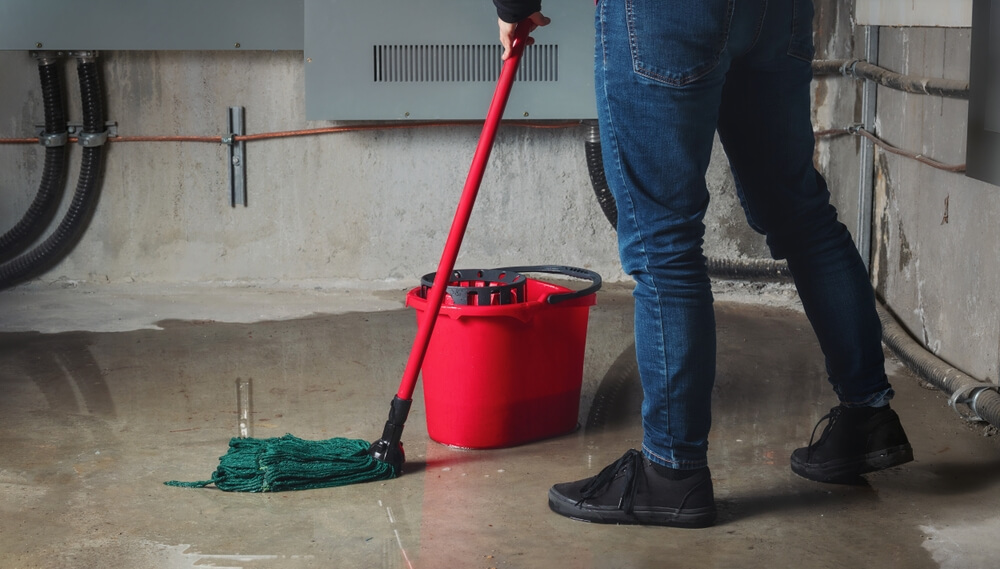The Best Home Insurance in Oshawa
Shop and save an average of $360* on Oshawa home insurance with RATESDOTCA. Get a better rate.
Compare Oshawa home insurance quotes from providers you trust
Jump straight to:
- Home insurance in Oshawa
- Average Oshawa home insurance rate compared to other major Ontario cities
- Average insurance rate by postal code
- Methodology
- Types of home insurance in Oshawa
- Add-ons to home insurance coverage in Oshawa
- What is not covered under your Oshawa home insurance
- How much insurance coverage do I need for my home in Oshawa?
- Recent home insurance quotes in Oshawa
- Factors that affect your Oshawa home insurance
- How RATESDOTCA finds the best home insurance in Oshawa
- How to get the cheapest home insurance in Oshawa
- What risks do homeowners face in Oshawa?
- Frequently asked questions about home insurance in Oshawa
Home insurance in Oshawa
Located in Durham Region, east of Toronto, Oshawa has a population of 175,383, according to the 2021 Canadian census. Given the city’s relatively small size and mild weather, it has cheaper home insurance than most cities in Ontario – though it’s not the cheapest when compared to its immediate neighbours, such as Ajax.
Unlike car insurance, home insurance is not mandated by law in Oshawa, or Ontario, in general. However, if you intend to mortgage your home, your lender will most likely ask you to buy home insurance. So, while it’s technically not mandatory, you’ll require it anyway.
What’s the average cost of home insurance in Oshawa in 2025?
In 2025, the average cost of home insurance in Oshawa is around $1,372 per year, or roughly $114 per month. This places Oshawa slightly below Ontario’s average home insurance cost of $1,565 per year, ranking it as the 22nd most affordable city for home insurance in the province.
Oshawa’s competitive rates are influenced by factors such as a mix of newer and established neighborhoods, moderate localized risks, and a balanced history of insurance claims. With its vibrant community and growing amenities, Oshawa remains an appealing place to live while offering relatively affordable home insurance rates.
| City | Average Insurance Cost | Difference from Oshawa ($) | Difference from Oshawa (%) |
|---|---|---|---|
| Markham | $1,215 | -$157 | -11.4% |
| Oshawa | $1,372 | +$0 | 0% |
| Mississauga | $1,470 | +$98 | +7.1% |
| Toronto | $1,523 | +$151 | +11.0% |
| Hamilton | $1,615 | +$243 | +17.7% |
| Ontario (Average) | $1,565 | +$193 | +14.1% |
Average insurance rate by postal code
Home insurance rates in Oshawa vary depending on factors such as property type, location, and coverage level. On average, residents in Oshawa pay approximately $1,372 annually for home insurance. Specific areas within Oshawa, identified by postal codes such as L1G, L1H, and L1K, may see slight differences in premiums due to neighborhood characteristics like safety ratings and proximity to emergency services. Homeowners in these areas should compare quotes from multiple providers to find the best coverage for their needs.
| Postal Code | Avg Home Insurance Premium |
|---|---|
| L1G | $1,215 |
| L1H | $1,316 |
| L1J | $1,454 |
| L1K | $1,399 |
| L1L | $1,464 |
*Home Insuramap methodology
Rates.ca’s Home Insuramap is an interactive online map, which allows Ontario residents to see how their home, condo or tenant insurance rates compare to other parts of their city or province.
The estimated premiums for each Forward Sortation Area (FSA) are based on the average of the lowest three quoted premiums, with maximum available coverage for water protection. The premiums were acquired using a profile of a 45-year-old homeowner, who has been insured for at least 10 years and lives in a 2,500 sq ft detached house, built 40 years ago, with brick veneer, wood frame construction, natural gas heat, a 10-year-old roof and replacement cost of $500,000.
The city averages were calculated using the FSA premiums from the Insuramap data for each city. However, instead of equal weighting for each FSA within the city, we looked at the number of actual quotes from Rates.ca’s websites in Q1 2025 and used those as weights.
The Ontario average was taken using the average premium for each city weighted by the number of quotes in each city from Rates.ca’s websites in Q1 2025.
Types of home insurance in Oshawa
There are four types of home insurance policy you can get in Oshawa. Though their nomenclature differs from insurer to insurer, they usually boil down to the following:
- Basic: One of the cheapest insurance types available. It protects both your property and possessions, but only from the perils explicitly listed in the policy. If the peril is not listed, then you’re not covered for it. That’s why it’s also known as a ‘named perils’ policy. It offers the least amount of coverage – if you exclude the ‘no-frills’ option, that is.
- Broad: This option is a little more inclusive, and more expensive too. It protects your property from most major perils, aside from those listed under ‘exclusions.’ When it comes to possessions, broad insurance protects only against the perils listed in the policy, just like the basic one.
- Comprehensive: If you want your property and possessions protected from most major perils – other than a few listed exceptions – this coverage type will do the job. With this insurance type, if a peril is listed for either your property or possessions, then you’re not covered for it. And vice versa. Be careful though. ‘Comprehensive’ doesn’t mean you’re protected from everything. Protections for perils like overland floods and earthquakes have to be purchased separately.
- No-frills: Got a home that can’t be covered by typical insurance? Then no-frills coverage may be handy. This option exists for homes that are in such a poor state that they are too risky to insure under normal circumstances. For instance, their electrical system is so out of date it has a very high chance of causing fire. This type of insurance is best only as a temporary solution – usually for securing a mortgage and/or until you get the home all fixed up.
What gets covered
Whether you go with basic, broad or comprehensive coverage, it must cover the following:
- Property: Your property entails the home itself as well as outbuildings and backyard decor, including your shed, barn, detached garage and even your garden. Be sure to check with your insurer as to what is or isn’t covered, just in case.
- Contents: These are your possessions – mainly the ones located inside your property, such as furniture, electronics and clothing. Your insurance should cover everything, aside from some of the more expensive items, like artwork or jewelry. Assess the value of such items and discuss with your insurer if you need additional coverage.
- Additional living expenses: Insurance companies will generally pay for your accommodation, travel and groceries should your home become unlivable due to a covered peril. Chat with your provider to see what’s covered and for how long.
Liability coverage
Your liability coverage would generally include the following:
- Personal liability: This comes into effect if someone gets accidentally injured on your property. The coverage can be between $100,000 and $5,000,000, depending on your financial situation.
- Medical payments: If you injure someone on your property by mistake, this will cover their medical expenses for up to a year from the date of the injury. The coverage may range from $1,000 to $10,000.
- Property damage: If you or a minor in your care under 12 years damages someone else’s property (such as your neighbour’s), then this will cover you. The coverage is between $500 and $6,000.
Note that if any of the above are done intentionally (for instance, you intentionally hurt someone), then your liability coverage will become void.
Commonly covered perils
Here are some of the most commonly covered perils by home insurers in Oshawa:
- Fire: Should your home or possessions catch fire, this will pay for replacing, rebuilding or repairing whatever ends up damaged or lost. Wildfires in particular are becoming a big problem in Canada, especially as of 2023. Check out how wildfires may impact your home insurance.
- Water damage: This one is tricky, since most policies don’t fully cover what some might see as ‘water damage.’ They typically only cover damage to your home or possessions, if caused by water from indoor plumbing, heating, air conditioning, sprinkler or a similar indoor or outdoor appliance. Damage from sewer back-up or overland flooding is normally not covered. Talk to your insurer to make sure you know what’s covered.
- Lightning: If lightning were to strike your home and damage some of your appliances or electronics, this will pay for their replacement or repairs.
- Theft and vandalism: If your home gets robbed or vandalized, your insurance will pay to rebuild, repair or replace whatever has been damaged or stolen. If you want to protect your home from theft altogether, especially while you’re away, check out these steps.
- Hail and wind: Severe wind or hail can damage both your home and possessions. Your insurance will cover the cost of repairing, rebuilding or replacing whatever ends up damaged or lost. It will also cover the damage caused by flying debris or falling trees, if caused by wind or hail.
- Falling objects: If an object falls from the sky onto your property and damages either the home itself or your possessions, this will pay for the necessary repairs and/or repairs. Note that objects moved by landslides or snowslides are usually not considered to be ‘falling objects.’ Consult with your insurer to make sure.
Add-ons to home insurance coverage in Oshawa
If you happen to realize that you need additional coverage, you can purchase it in the form of ‘add-ons’ or ‘endorsements.’ Here are some of the most common ones:
- Overland flooding: If your home gets flooded as a result of overflowing water from a river, stream, lake, thawing snow or another body of water, this add-on will cover you.
- Sewer back-up: This type of flooding occurs due to backed up sewage pipes, toilets, drains or showers. They typically get backed up when too much rainwater or melted snow enters the sewer system at once. If sewer back-ups are a concern in your area, be sure to talk to your insurance provider about them.
- Earthquake: Though they don’t happen often, earthquakes do occur in Oshawa. So, if you’re worried about them, talk to your provider to buy yourself extra coverage. That said, it’s probably not necessary in this part of Canada.
- Windstorm: A strong enough windstorm can damage your home’s structure, possessions and windows, in addition to showering your property in debris. Depending on your provider and policy, you may have this covered without needing the add-on, but it’s worth inquiring your provider about it all the same.
- Mass evacuations: Should a major peril like flooding or wildfires result in mass evacuations, this will protect your accommodations and food, while you’re away from home.
- Expensive items: If you own pricy things like jewelry, collectibles and/or artwork, then you may need extra coverage for them. Do an inventory of all your possessions, while assigning monetary value to them. After that, talk to your provider to find out if you need extra coverage.
What is not covered under your Oshawa home insurance
Though home insurance can be extensive, it won’t protect you from everything. That’s because some things are strictly the responsibility of the owner, including these:
- Mold: Given that mold occurs slowly, as a result of pre-existing conditions such as extreme humidity – there is usually enough time for you to prevent it. Home insurance is mostly meant to cover sudden and largely unforeseen events, such as fires, floods and robberies. Mold isn’t one of them.
- Pest infestations: Like mold, pest infestations, including mice, bedbugs, cockroaches and termites, are not sudden. So, if they cause any damage, it’s highly unlikely that your home insurance will cover it. That’s why, as soon as you notice an infestation, you should contact the appropriate service to help you resolve the issue (this service shouldn’t be your insurer).
- Deliberate damage or injuries: If you purposely damage your own property or possessions, your insurance company will not cover the costs. In fact, if you attempt filing a claim for that, you may be accused of insurance fraud, which is illegal. The same applies to your liability coverage if you decide to intentionally injure someone on your property.
How much insurance coverage do I need for my home in Oshawa?
Your personal circumstances and requirements will determine how much cover you would need. Since Oshawa is prone to occasional severe weather and instances of theft and vandalism, you might want to get more coverage in those areas. Your specific neighbourhood is also worth considering, since it may have higher crime rates, including more break-ins. South Oshawa tends to have more crime than the north side, for instance.
The size of your home, the cost of rebuilding it and the value of your possessions are also a factor, since the higher the costs, the more you have to pay for your insurance. To learn more, you can consult either with your insurance agent or broker. Alternatively, you can compare quotes from 50+ home insurers via RATESDOTCA. This will provide you with actual numbers, which will be applicable to your specific needs and circumstances.
Recent home insurance quotes in Oshawa

Recent home Insurance Quote from Oshawa, ON
Detached 2,552 sq ft
July 15, 2025
Cheapest Quote
$ 186 / month
$ 2,233 / yearAverage Quote
$ 295 / month
$ 3,540 / yearSavings
$ 109 / month
$ 1,308 / year
37 %
Recent home Insurance Quote from Oshawa, ON
Detached 2,917 sq ft
July 15, 2025
Cheapest Quote
$ 158 / month
$ 1,891 / yearAverage Quote
$ 255 / month
$ 3,062 / yearSavings
$ 98 / month
$ 1,176 / year
38 %
Recent home Insurance Quote from Oshawa, ON
Detached 1,108 sq ft
July 15, 2025
Cheapest Quote
$ 132 / month
$ 1,581 / yearAverage Quote
$ 253 / month
$ 3,036 / yearSavings
$ 121 / month
$ 1,452 / year
48 %
Home insurance quotes are compared from Apollo Insurance, CAA, Economical Insurance, Pembridge, Square One Insurance, and SGI
Factors that affect your Oshawa home insurance
Your Oshawa home insurance premium will depend heavily on factors unique to you and your property. Here are some of the biggest ones:
Home-related factors
- Rebuilding cost: How much would your home cost to rebuild if it were completely destroyed? Insurers take into account material costs, the square footage of the home, the number of floors and the home’s structure. The higher the cost, the higher the premium.
- Condition: Contrary to what some may think, older homes tend to be more expensive to insure. That’s because many of them are not in their best condition. They may have leaky pipes, outdated electrical wiring, structural issues and other maintenance problems. The condition of some homes is so poor sometimes that certain providers may not even be willing to insure them in the first place.
- Roof age: Roofs that have not been renovated in more than 20 years tend to have issues like poor insulation and leaks, both of which can cause damage to the rest of your home over time. As a result, insurers may cover only 25% of the roof’s replacement cost if something happens to it – on top of charging more expensive premiums. So, make sure your roof is in good shape.
- Renovations: Making changes to your home that might increase its rebuilding costs will make your premiums more expensive – provided you notify your insurer about those changes. If you don’t, then your payout might be lower than expected, should something happen to your home.
- Location: Some perils affect certain areas more than others, including crime, severe weather, floods and earthquakes. The more at risk the area is, the more expensive the premiums will be. Fortunately, Oshawa is a relatively safe place. Yes, like much of Canada, it’s affected by severe winter weather, but it tends to be milder here than in the rest of Ontario. The risks of floods and earthquakes are low as well. This leaves only theft and vandalism, which do happen in Oshawa – in greater numbers than in neighbouring cities such as Ajax – but they are still not as prevalent as in other places, like Toronto, for instance.
- Security: Smoke and burglar alarms can help lower the risk of sever fires and break-ins, so consider getting the best ones you can find. They may not only lower your premiums, but they save your life and property.
- Closeness to fire halls and hydrants: The farther your home is from a fire hall or hydrant, the more likely it is to burn down completely, should it catch fire. This issue mainly afflicts homes in rural areas, which are sparsely populated. Oshawa is a relatively densely populated place, so this issue should be non-existent here.
Homeowner-related factors
- Claim history: One of the biggest culprits behind higher premiums is the person’s claim history. The more claims you make – regardless of the problem – the more expensive your premiums will be. Home insurance is meant to cover major events only, such as fires, floods and earthquakes. A leaky pipe that causes minor damage to your home, for instance, may not be significant enough to require insurance. So, weigh your decisions carefully.
- Credit score: It turns out that people with good credit scores also tend to file fewer insurance claims. So, you may want to agree to a soft credit check (one that doesn’t affect the score) to lower your premiums. There is no downside to this, because in Ontario, insurers can’t use your credit score to increase your premiums.
- Mortgage: By paying off a good portion of your mortgage, you can secure a premium discount ranging from 10% to 20%. Ask your insurer about it, if you think you qualify.
How Rates.ca finds the best home insurance in Oshawa
We are partnered with over 50 home insurance agencies and brokerages in Ontario, with the goal of offering our customers a wide selection of quotes. You can compare our quotes side by side from just about anywhere on this website. This incentivizes our partners to give you the cheapest rates they can afford to secure your business. The competition between various insurers is what makes quotes cheap.
What’s great is that the comparison process is both fast and free. You can give it a try today, if you want. This would give you a good idea of where the market is now and perhaps even prompt you to buy coverage right on the spot.
How to get the cheapest home insurance in Oshawa
If you’re looking for a way to lower your home insurance premiums, here are some of the steps that you can take:
- Bundle multiple policies: Bundle your home insurance with your car insurance under one provider. This will not only get you a good discount but streamline your payments.
- Increase your deductible: Though increasing your deductible means you’ll have to pay more out of pocket should your home get damaged, you can save a lot more – enough to repair your home in case of a disaster.
- Install a burglar alarm system: A burglar alarm system will deter potential break-ins and vandalism, reducing the risk to your home and lowering your premiums. This is especially valuable in high-crime neighbourhoods, like the ones you can find in parts of Oshawa.
- Update your plumbing and electrical systems: If your home is a bit older, then it may have outdated plumbing and electrical systems. To reduce the risk of flooding and fire and to lower your premiums, consider upgrading them if you have the means.
- Protect your home from floods: As climate change makes weather-related floods more frequent, it’s not a bad idea to protect your home from them. We recommend adding sump dumps, reinforcing your basement walls and renovating your roof to reduce water damage. This will lower your premiums in the long term.
- Ger a loyalty discount: If you’ve stuck with the same insurance provider for a while, ask them for a loyalty discount when renewing your policy.
- Avoid monthly payments: Paying your insurance monthly increases your premiums, as they usually translate into higher administrative costs for the insurer. By paying annually, you can save on those costs, and in turn, lower your premiums.
- Don’t over-insure your home: Be careful not to purchase more coverage than you need. It will cost you more than necessary and may not even protect your home from the next peril to befall it. Your best bet is to analyze the risks and buy only the coverage that will actually benefit you.
- Agree to a credit score check: By going through a soft credit score check, you can lower your home insurance premiums – as long as your credit score is high. That’s because people with good credit scores are statistically less likely to file a claim than those with poor scores. What's great about this is that in Ontario, insurance companies can’t use your credit score to increase your premium, so agreeing to this has no adverse effects.
- Comparison shop: Don’t settle for one insurer when there are so many options you can choose from. Use websites like RATESDOTCA to compare quotes from over 50 providers in Oshawa and secure the cheapest home insurance quote available. It’s fast and it’s free.
How to get your Oshawa home insurance
Tell us about your home
Answer some basic questions about your home. It won't take long!
Compare your rates
See quotes from top insurance companies side by side.
Choose the right coverage
Find the right protection for your home and everything in it.
Secure your rate
Connect with the provider and secure your rate.
What people say about our quotes

Based on 6,450 reviews

Fast efficient and fair
Quick quotes. Great rates. Easy to process
Trinity

Comparing Travel Insurance …
This was the only site I could find that allowed me to compare different travel insurance options. I particularly liked the ability to look at sample documents.
Toronto

Amazing
Very helpful and easy to use
Safe travels

Easy quick selection of rates
Easy quick selection of rates
J K

Great help in finding the best rate!
Great help in finding the best rate! Thanks a lot!
Ruthielyn opina

I like how I can quickly I can select…
I like how I can quickly I can select travel insurance. The web site had an issue earlier but seemed to correct itself.
Dennis
What risks do homeowners face in Oshawa?
Oshawa is a relatively safe place to own a home. Major disasters like tornadoes, overland floods and earthquakes rarely affect it in a big way, and for the most part, homes are safe from theft and vandalism, though it is doing worse in this regard than its neighbours. With that in mind, some of the biggest risks in Oshawa include:
- Windstorms: Though Oshawa doesn’t get too many windstorms due to its proximity to Lake Ontario, they do happen. In 2022, for instance, a derecho in Ontario and Quebec caused $1 billion in damages, affecting the Greater Toronto Area, Ottawa, Trois-Rivières, Quebec City and several other areas in those provinces.
- Freezing temperatures: Winter temperatures in Oshawa can sometimes be as low as -30°C. This increases the potential for burst and frozen pipes.
- Flooding: Thawing snow in spring is known to cause floods in Oshawa and other parts of the Greater Toronto Area. The drainage system in Oshawa is solid enough to prevent this from happening in most cases, but it’s not always effective. This is especially a problem if you have a basement.
Frequently asked questions about home insurance in Oshawa
Got more questions about Oshawa home insurance? We got you covered.
Do high Oshawa real estate prices affect the cost of home insurance?
No, real estate prices do not have a direct impact on home insurance premiums – in Oshawa or anywhere else in Ontario or Canada. What does impact home insurance premiums, though, is the cost of rebuilding a home from the ground up. When determining this cost, insurance providers account for materials, labour, permits and other factors, all of which vary in price from one city to another. That’s why rebuilding costs are different across Canada, and so are the insurance rates.
Which company offers the cheapest Oshawa home insurance?
There is no reliable way to pinpoint which company offers the cheapest home insurance in Oshawa, because it will largely depend on your claim history, property, location and coverage. However, you can find a provider who will offer the cheapest quote to you – or as close to the ‘cheapest’ as one can get. Doing so will involve shopping around and using online tools like RATESDOTCA to compare the quotes available in your area.
How do I save on Oshawa home insurance?
You can do so by shopping around for the cheapest quote via RATESDOTCA. Using this online tool, you can compare quotes from over 50 insurance providers in your area for free. All you need to do is take a few minutes to share a little about yourself, so you can get the coverage that matches your exact needs, and the quotes will come right after.
If you’re still not happy with your quote, then you may want to check out our tips on how to get cheap home insurance in Oshawa.
How do Oshawa home insurance claims work?
Should your home and/or possessions get damaged or lost due to an unforeseen event, notify your home insurance provider right away. They’ll be happy to guide you through the process of filing your claim.
Before you contact anyone, make sure you have inventoried all your damaged or lost items and gathered details on what happened to them. If they were simply stolen, then just list the stolen items. Consider including photos or even videos to fully convey the damage or loss. Finally, don’t get rid of the damaged goods before you notify the insurer.
After all of this is done, the insurer will assign a claims advisor to your case, who will contact you shortly.
Is fire covered under my Oshawa home insurance policy?
It should be, since even the most basic of coverages should protect you from fire – no matter what causes it. You also get protection from lightning in most standard policies. What’s especially neat about fire coverage is that it can partially protect you from perils you’re not covered for – provided those perils cause a fire (it’s best not bet on this, however, and get the coverage you need if you feel there is a risk to your property).
It’s worth nothing that you should always get this coverage well before there is any risk of fire. For instance, if there is a wildfire less than 50 kilometres away from your home and you decide to buy this coverage, you may not get the protection you need until the wildfire is over.
How can I get vacant home insurance in Oshawa?
You can purchase vacant home insurance from an insurer in Oshawa, the same way as you would regular insurance. That said, due to vacant homes being riskier to insure than normal homes, not all insurers will sell this coverage. In general, most home insurance policies are designed for lived-in homes, and thus, have a built-in expectation that someone will maintain them – whether it involves taking care of keeping the light on to ward off burglars or taking care of that leaky pipe.
Without someone overseeing a vacant home, there is a higher chance that a minor issue, such as a burst pipe, will turn into a major one, such as a flood.
Because of this, vacant home insurance doesn’t offer the same amount of coverage as regular home insurance. Flood damage and vandalism, for example, often do not get covered. Furthermore, due to the higher risk, vacant home insurance is often more expensive too – by as much as 50%. Talk to your home insurance provider to find out what coverage is available and how much it would cost.
*Shoppers in Ontario who obtained a home insurance quote on RATESDOTCA from January to December 2023 saved an average amount of $360. The average savings amount represents the difference between the shoppers’ average lowest quoted premium and the average of the second and third lowest quoted premiums generated by RATESDOTCA. Excludes tenant and condo insurance.











